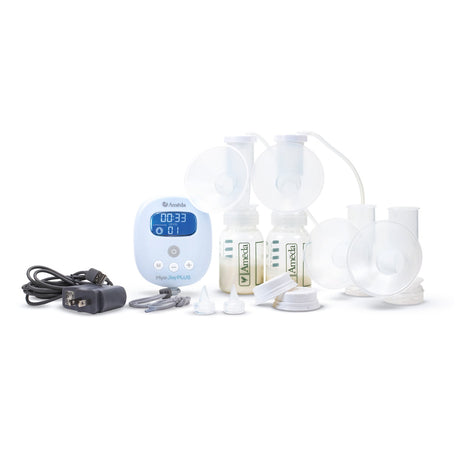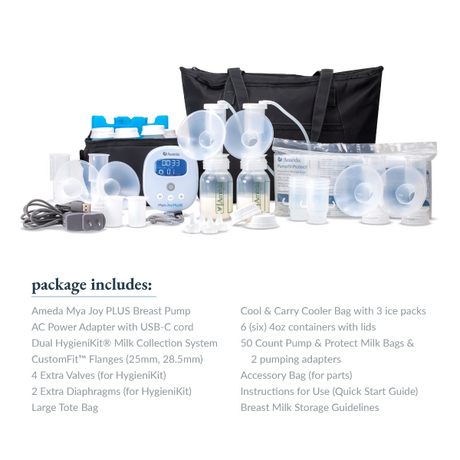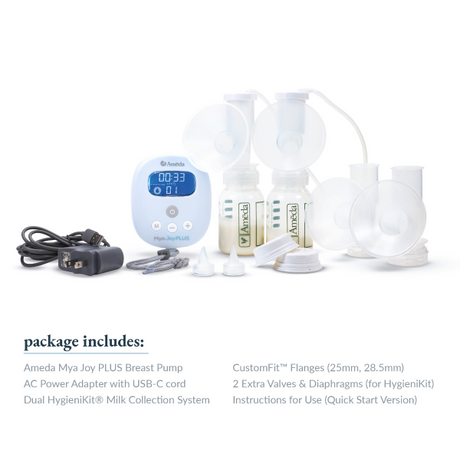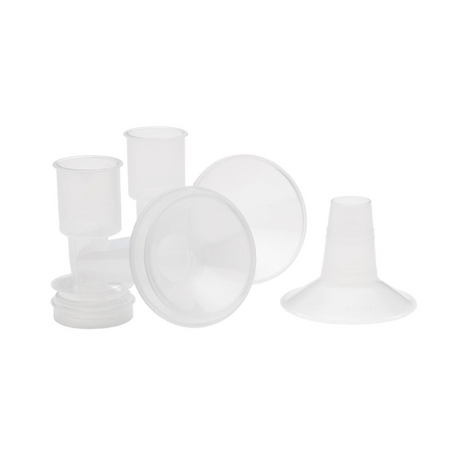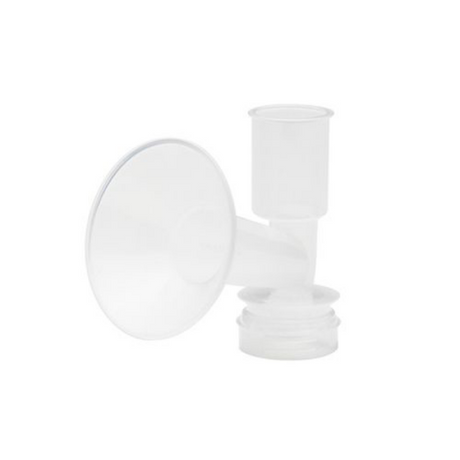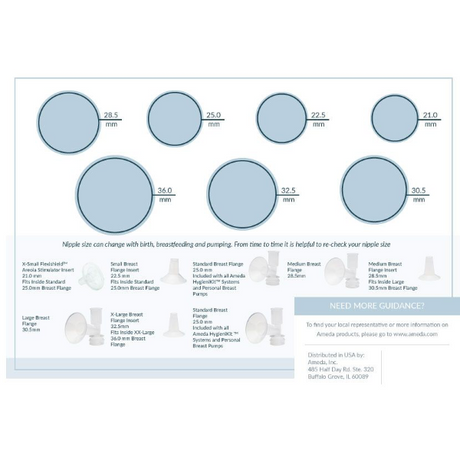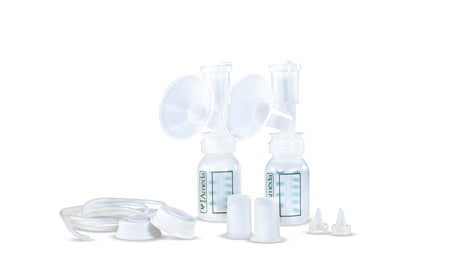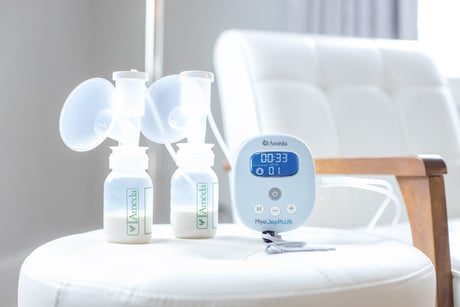Published:
When You Should Pump?
We recommend breastfeeding as much as possible. It is the best way to feed your baby. However we understand that not every mom can feed on demand and be with their baby 24 hours a day. If you want to continue to provide your baby with breastmilk, a breast pump is an effective way to establish and maintain a good milk supply. There are many reasons to pump breast milk.
- You may want to store milk for when you’re away from your baby. Maybe you’re going back to work, leaving your baby with family, friends, or a babysitter, or running errands.
- Your baby is unable to latch or feed directly from the breast.
- You want to give your baby breastmilk but don’t want to feed directly from the breast.
- You’re interested in donating milk to a milk bank or milk exchange program.
- You’re trying to increase your milk supply, are weaning and need to alleviate pressure, or are suffering from mastitis or need to drain your breast to help healing
- Many other reasons!
Things You Need to Know before Breast Pumping
Once you’re ready to start breast pumping, there are a few things you need to know. If you have a full-term, healthy, breastfeeding baby, you can wait a few weeks to start pumping and storing breast milk. If your baby is preterm or ill and cannot breastfeed yet, or if you have chosen to exclusively pump, pump as soon as you can after birth, preferably within one to six hours of delivery.
If you’re primarily breastfeeding:
- Pump in the morning. Many moms get the most milk first thing in the morning.
- Pump between breastfeeding, either 30-60 minutes after nursing or at least one hour before breastfeeding. This should leave plenty of milk for your baby at your next feeding.
- If your baby wants to breastfeed right after breast pumping, let them! Some babies are patient and will just feed longer to get the milk they need.
If you’re exclusively breast pumping:
- Plan to pump 8-10 times in a 24 hour period. Full milk production is typically 25-35 oz. (750-1,035 mL) per 24 hours.
- Once you have reached full milk production, maintain a schedule that continues producing about 25-35oz of breastmilk in a 24 hour period.
- Each mom and baby are different, plan your pumping sessions around what works best for the two of you.
Remember, a quality, electric breast pump is essential to breast pumping success.
Learning to Pump
Learning to pump can be a daunting process. These steps will set you and your baby up for success.
- Do a little homework. Read up on the basics of breast pumping, and be sure to review your breast pump instructions.
- Find a quiet, comfortable place to sit.
- Bring a drink and a snack.
- Plug in your pump or make sure it has working batteries.
- Wash your hands with soap and water.
- Assemble the pump kit.
- Center the flanges over your breast(s) and center the nipple in the flange opening, making an air seal. Flange fit is important!
- If you’re double pumping, cup each flange to the breast with fingers below the flange and thumb on the top. When adjusting your dials, switch to using one arm across both breasts, keeping an airtight seal.
- Turn your pump on.
- Similar to a baby nursing at the breast, start out with high speed and low suction until you see milk flow (let-down), then adjust speed to medium and increase suction based on comfort level.
- Once milk flow decreases, increase speed to high until the next let-down, then decrease to medium speed.
Keep going! You’ll find pumping gets quicker and easier with practice.
How Much to Pump
How much milk you should expect to pump will vary depending on factors such as your baby’s age, time since last feeding or pumping, time of day, pump type, how much practice you’ve had with your pump, and whether you’re relaxed or stressed. If you’re primarily breastfeeding, on average, you can expect:
- More milk production in the morning hours .
- Volumes gradually decreasing during the day into the evening.
- Breast milk volumes are dependent on many variables and each breast may produce different volumes.
If you’re exclusively pumping, on average, you should try maintain full milk production of about 25-35 oz. (750-1,035 mL) per 24 hours. It may take some time to achieve this target, do not worry about hitting this on day one!
Babies may take more milk from the bottle than when breastfeeding. The faster, steadier flow of the bottle causes some babies to take more than they need. A slow-flow bottle may help prevent overfeeding.
How to Reach and Maintain Full Milk Production
If you’re pumping because your baby is preterm or too sick to breastfeed, or because you have chosen to exclusively pump, follow these tips to reach and maintain full milk production. Pumping often to drain the breast completely sends a signal to the body to produce more milk. The more often you drain your breasts the more milk they will make.
From Birth to Day 4
- If you can, start pumping within six hours after birth.
- Use a multi-user pump to initiate and maintain milk supply.
- Expect to pump just a little colostrum (the first milk) at first.
- As soon as possible, pump 8-10 times every 24 hours. This is how many times each day your baby would typically feed from the breast. In most cases, the more times each day you pump, the more milk you make. The reverse is true, too. Pumping fewer times will produce less milk.
- Double pump (pump both breasts at once); this saves time and may boost production more quickly.
- Pump at least 10-20 minutes, until your milk comes in on Day 3 or 4. Then, hand express any remaining milk. Remove and place the breast flange under your breast to collect the milk you hand express. (The hand expression helps to better drain your breast, and drained breasts make milk faster.)
- To help establish milk supply, pump at least twice between 1 to 6am. In early morning hours milk- making hormone levels increase and taking advantage of this will increase your milk production.
From Day 4 to Full Production
When your milk increases from drops to ounces on about day 4, make these changes:
- Pump longer, two minutes after the last drop of milk or until your breasts are softened/no longer feel full.
- Focus on the total number of pumpings each day (8-10 times per 24 hours) rather than the time between pumpings (every 2-3 hours).
- Don’t allow more than one five-hour period to pass without pumping during your baby’s first two weeks of life.
Many moms find it easier to focus on their daily total rather than pumping at a set time each day. This daily total also seems to be most important to your milk production.
Maintaining Full Milk Production
When you reach 25-35 oz. (750-1,050 mL) per baby per 24 hour period, you’ve met your goal. Most moms can then pump fewer times each day and maintain production. At this stage:
- Maintain a schedule that continues producing approximately 25-35oz of breastmilk in a 24 hour period.
- While maintaining your optimal production of milk, you can try and sleep more. Once full production is developed, many moms pump right before bed and first thing in the morning. See if you can do this without too much breast fullness or a decrease in milk production.
- Pump for a shorter period of time. For many moms, 10-15 minutes of pumping is long enough.
- Once a week, add up the milk you pump in a 24-hour period. Write it down and compare your totals each week. You’ll know right away if your production drops.
Increasing Milk Production
If you need to boost milk production, the sooner you work on it, the faster you’ll see results. Some ideas to try are:
- Pump more. 8-12 pumpings per a 24 hour period boosts milk production for most moms.
- Pump longer, two minutes after the last drop of milk or until your breasts are softened/no longer feel full.
- Check your breast flange size; it can change with time.
- Use breast massage before or during pumping.
- Hand express after pumping.
- Ask your lactation consultant or healthcare provider for additional information on increasing milk supply.

Weaning From the Pump
When you decide to wean from the pump, remember the safest and most comfortable weaning is almost always a gradual one. There are a couple of ways to wean from the pump:
- Drop one daily pumping. Give your body two to three days to adjust. Then drop another daily pumping. Leave your first and last daily pumpings until the end. Repeat until you’re fully weaned from the pump.
- Keep the number of pumpings the same but pump for a shorter period of time. For example, if you were getting 4 oz. (120 mL) at each pumping, stop after 3 oz. (90 mL). Give your body two to three days to adjust and then do it again. Repeat until you no longer feel the need to pump.
While weaning, if your breasts ever feel full, pump just long enough to make yourself comfortable. Letting your breasts stay too full puts you at risk for pain and infection.
To learn more about breast pumping and breastfeeding, check out these articles:
- Breastfeeding at work
- How to store breast milk safely
- Breast pumping basics
- Benefits of breastfeeding
This is general information and does not replace the advice of your healthcare provider. If you have a problem you cannot solve quickly, seek help right away. Every baby is different. If in doubt, contact your physician or healthcare provider.



